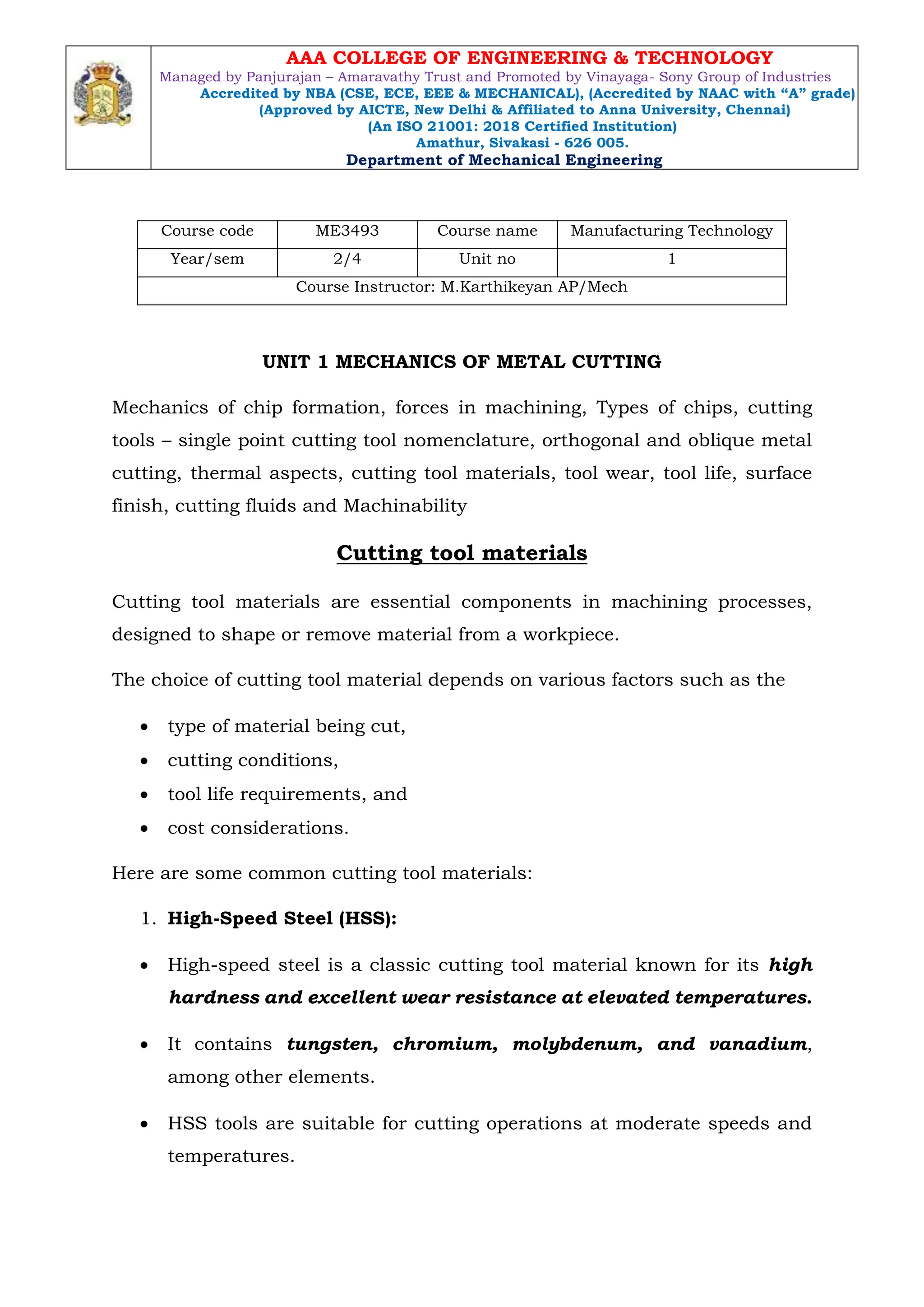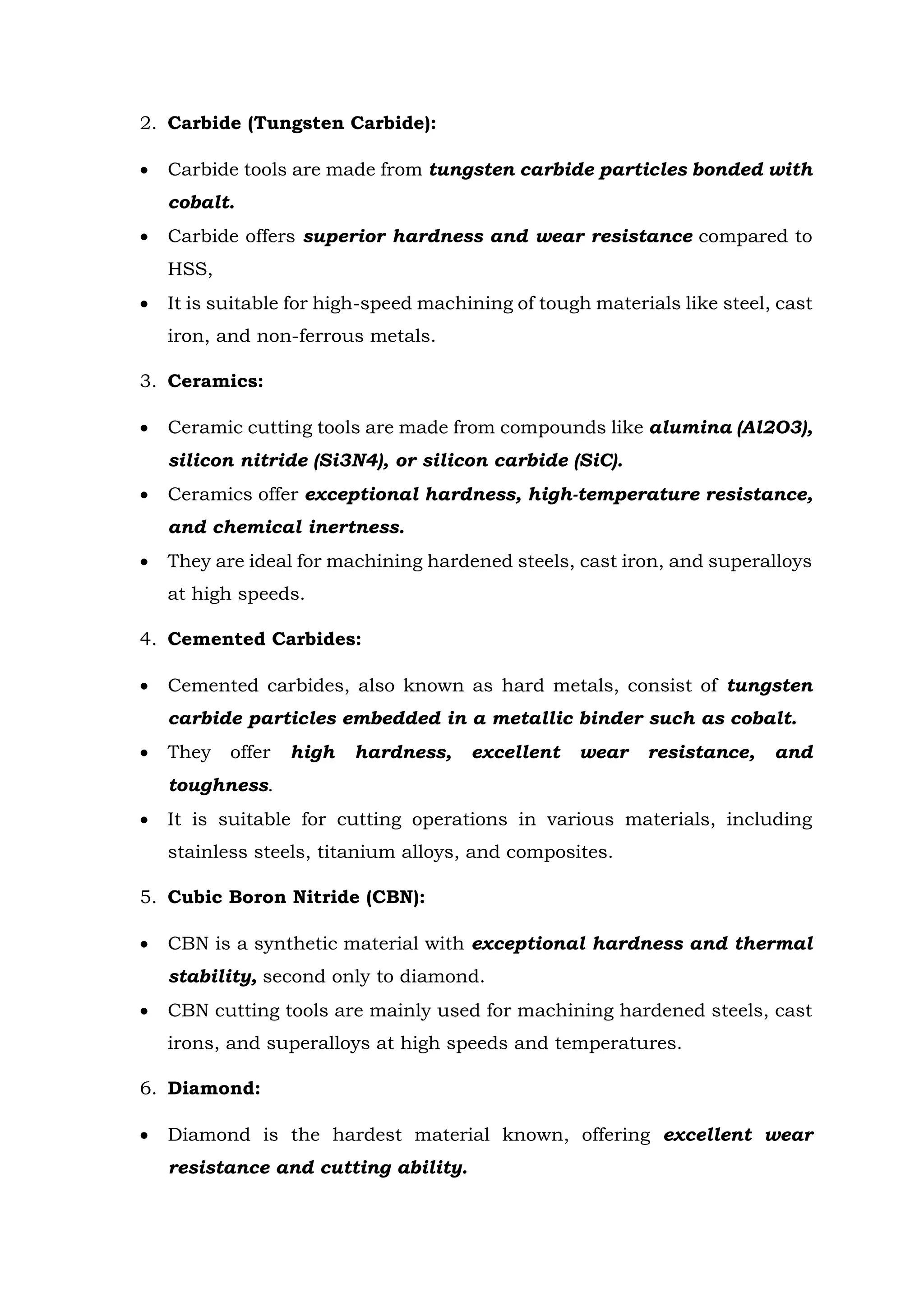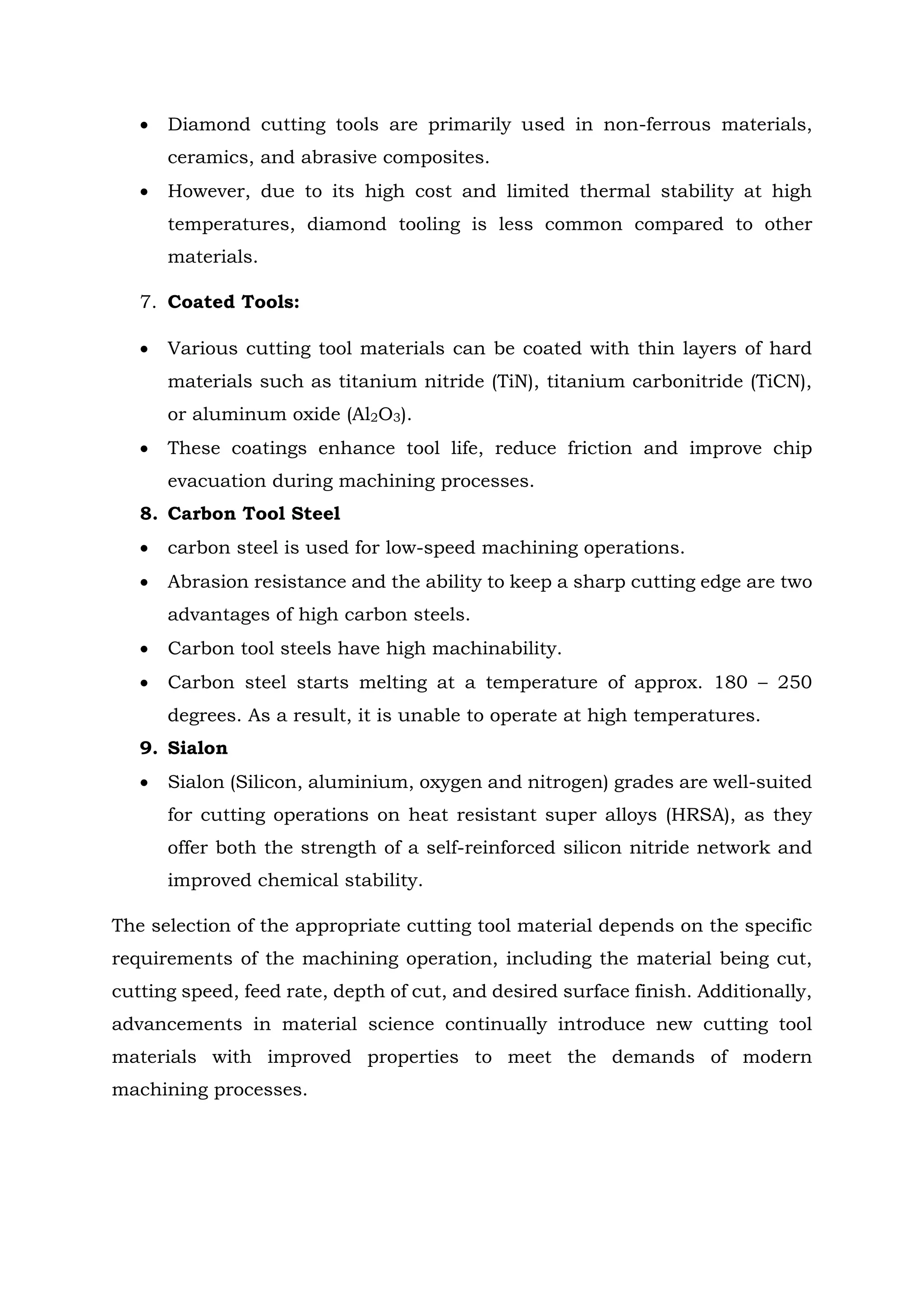This document discusses different types of cutting tool materials used in machining processes. It describes 9 common cutting tool materials: high-speed steel, carbide, ceramics, cemented carbides, cubic boron nitride, diamond, coated tools, carbon tool steel, and sialon. The key properties and applications of each material are outlined. The selection of the appropriate cutting tool material depends on factors like the workpiece material, cutting conditions, tool life requirements, and cost considerations.


